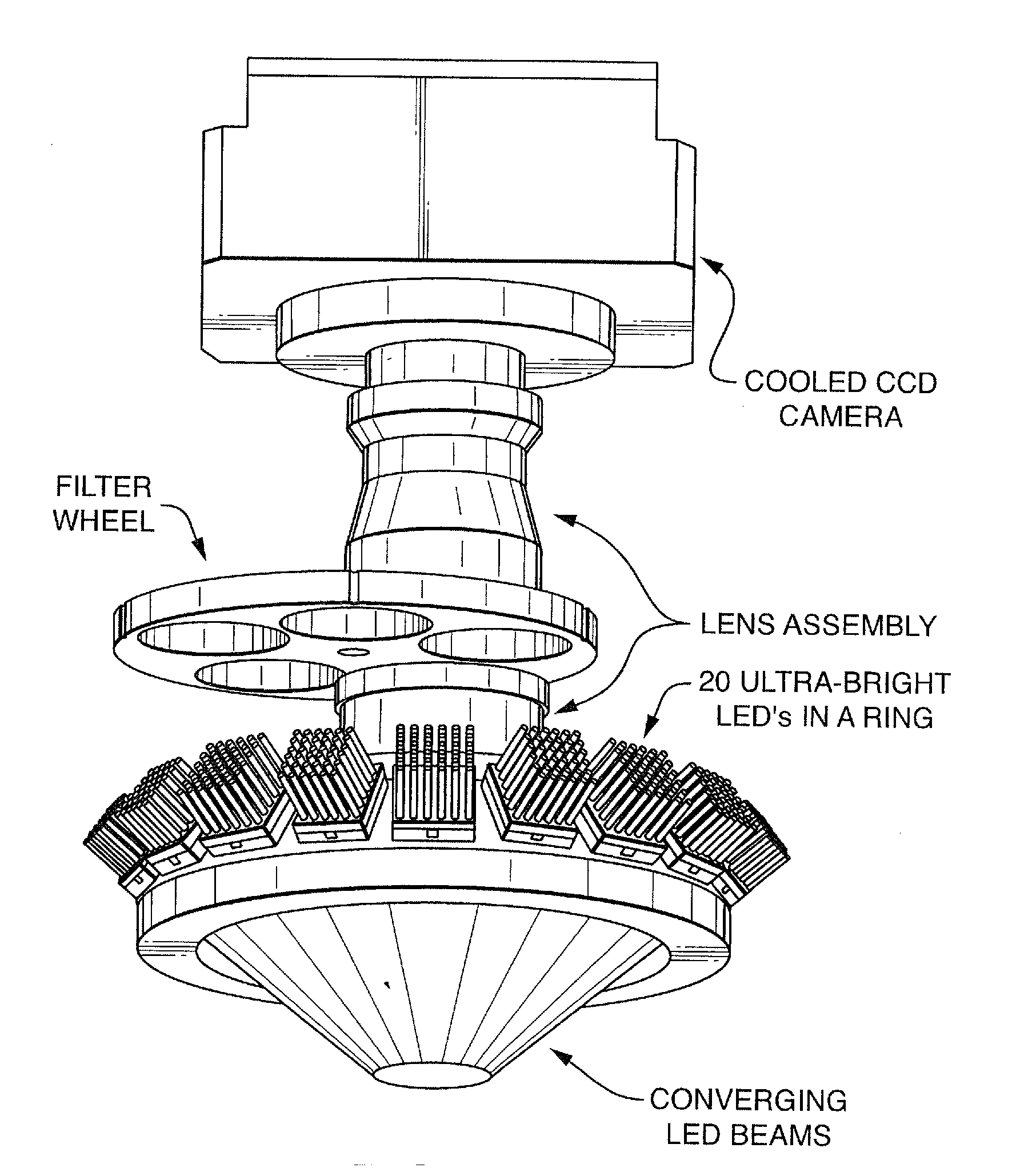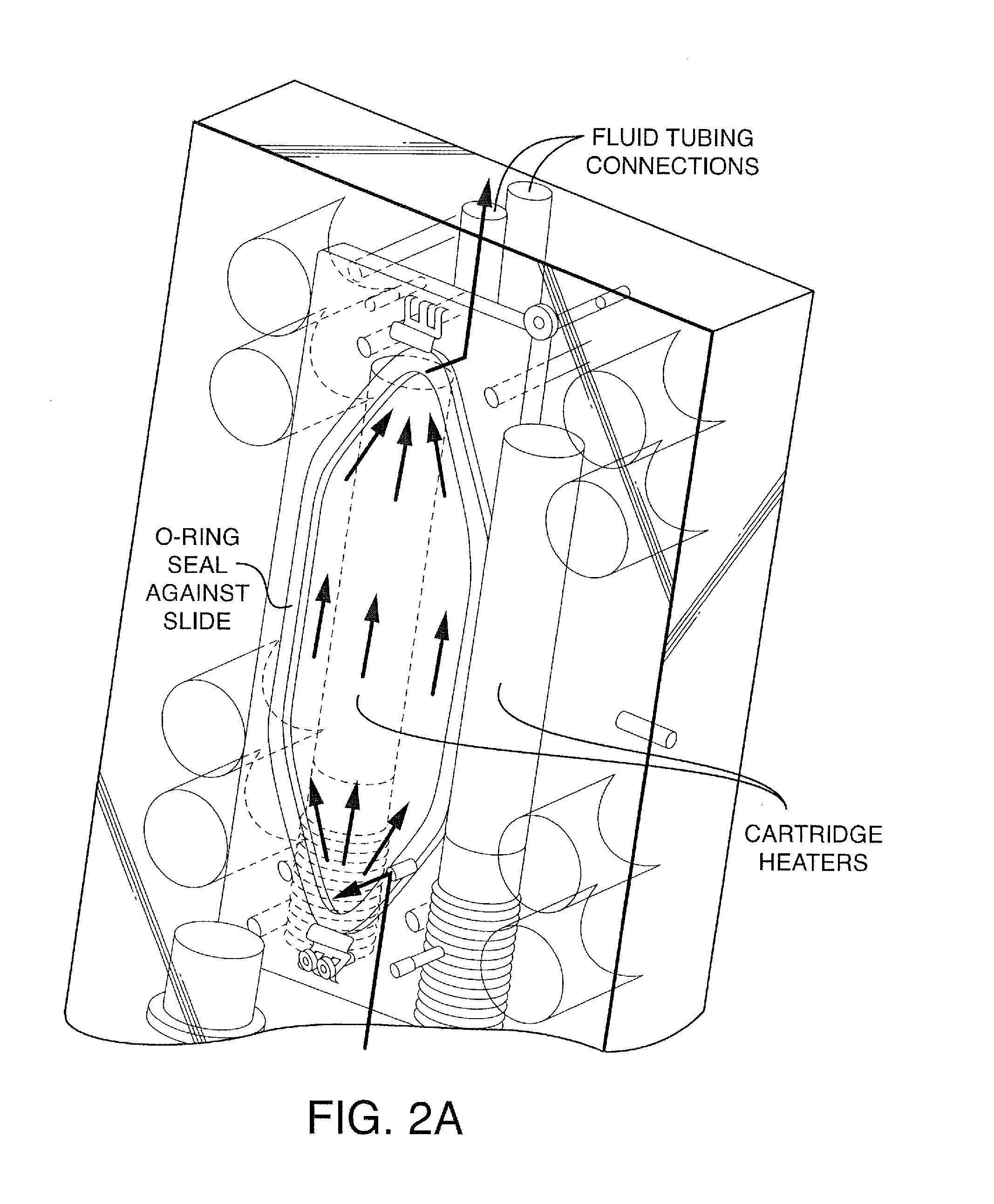Detection Device And Methods Of Use
a detection device and detection method technology, applied in the direction of fluorescence/phosphorescence, material analysis through optical means, instruments, etc., can solve the problems of difficult to perform concurrent measurements of a number of different fluorescent labels that may be present in a sample (or in different samples), existing fluorometers, and inability to facilitate such multiple-label experiments
- Summary
- Abstract
- Description
- Claims
- Application Information
AI Technical Summary
Benefits of technology
Problems solved by technology
Method used
Image
Examples
Embodiment Construction
[0030]The present invention contemplates a fluorescent detection system and a flow cell for processing biomolecules (e.g. nucleic acid samples) arrayed on a “chip” or other surface (e.g. microscope slide, etc.). The flow cell permits the user to perform biological reactions, including but not limited to, hybridization and sequencing of nucleic acids.
[0031]It is not intended that the present invention be limited to particular light sources. By way of example only, the system can employ ultra-bright LEDs (such as those available from Philips Lumileds Lighting Co., San Jose, Calif.) of different colors to excite dyes attached to the arrayed nucleic acids. These LEDs are more cost effective and longer life than conventionally used gas or solid state lasers. Other non-lasing sources of lights such as incandescent or fluorescent lamps may also be used.
[0032]FIG. 1 shows a useful configuration of the LEDs, whereby the emitted light converges on a region or platform (e.g. suitable for posit...
PUM
| Property | Measurement | Unit |
|---|---|---|
| wavelength | aaaaa | aaaaa |
| wavelength | aaaaa | aaaaa |
| wavelength | aaaaa | aaaaa |
Abstract
Description
Claims
Application Information
 Login to View More
Login to View More - R&D
- Intellectual Property
- Life Sciences
- Materials
- Tech Scout
- Unparalleled Data Quality
- Higher Quality Content
- 60% Fewer Hallucinations
Browse by: Latest US Patents, China's latest patents, Technical Efficacy Thesaurus, Application Domain, Technology Topic, Popular Technical Reports.
© 2025 PatSnap. All rights reserved.Legal|Privacy policy|Modern Slavery Act Transparency Statement|Sitemap|About US| Contact US: help@patsnap.com



